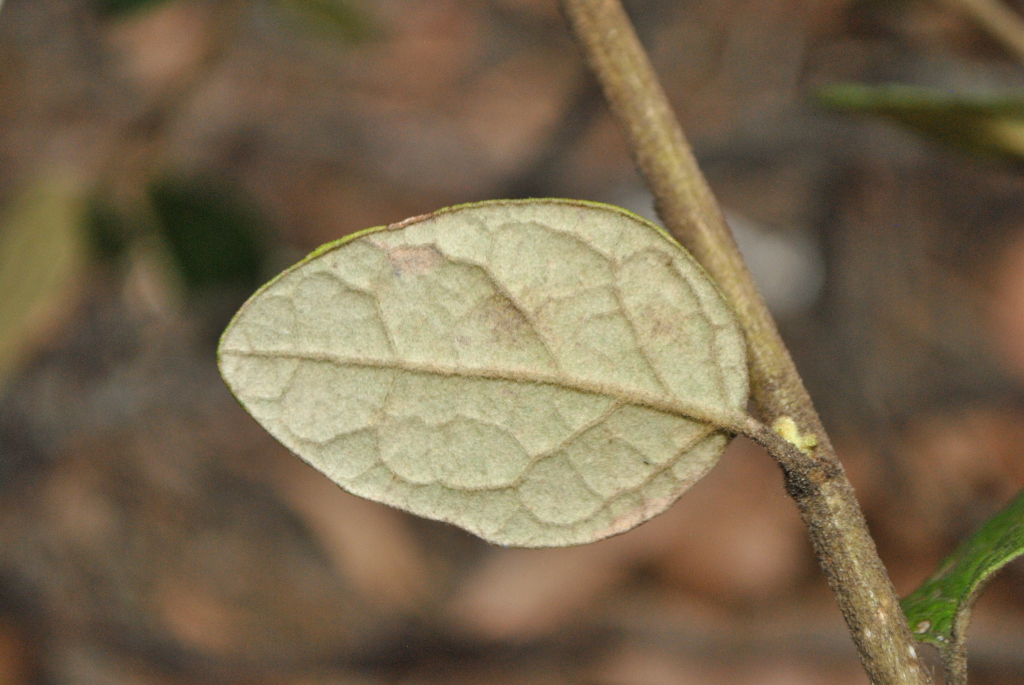Olearia tomentosa
(J.C.Wendl.) DC.Spreading shrub to c. 2 m high; branchlets and leaf undersurfaces densely tomentose with rusty, tangled, T-shaped hairs. Leaves alternate, petiolate, ovate, 20–70 mm long, 12–45 mm wide, discolorous; upper surface lightly tomentose and/or scabrous, with impressed reticulate venation; lower surface cream to rusty, darker over veins; margin recurved, crenate to distantly serrate, rarely quite entire; petiole to c. 15 mm long. Capitula 35–55 mm diam., terminal, solitary or in loose corymbs; peduncles mostly 2–8 cm long; involucre broadly campanulate, 7–10 mm long; bracts 3–5 seriate, graduating, pubescent, or the innermost glabrous. Ray florets 12–33, white, ligules 12–25 mm long; disc florets c. 30–90, yellow. Cypselas narrow-ellipsoid, often curved, c. 4 mm long, 6–8-ribbed, glabrous, dark brown; pappus bristles pale, 7–9 mm long. Flowers mostly Sep.–Dec.
EGL, EGU, HFE. Also NSW. In Victoria confined to the Howe Range (east of Mallacoota Inlet), where occasional in open-forest, usually on sandy or granitic loam soils.
Walsh, N.G.; Lander, N.S. (1999). Olearia. In: Walsh, N.G.; Entwisle, T.J., Flora of Victoria Vol. 4, Cornaceae to Asteraceae, pp. 886–912. Inkata Press, Melbourne.
 Spinning
Spinning
